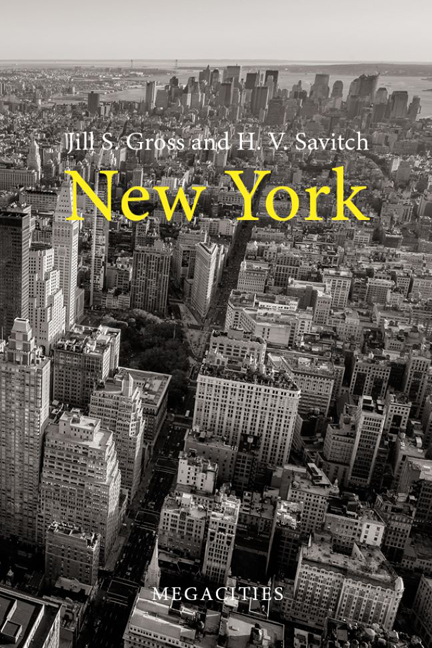Book contents
- Frontmatter
- Contents
- Preface and acknowledgements
- 1 Introduction: New York as a megacity
- 2 Crises, breakdowns and New York’s endurance
- 3 Building a global megacity: corporate- centred urban development and leadership
- 4 Expanded governance in the megacity
- 5 Neighbourhoods, diversification and gentrification in the megacity
- 6 Globalization in the megacity
- 7 Conclusions
- References
- Index
Preface and acknowledgements
Published online by Cambridge University Press: 20 January 2024
- Frontmatter
- Contents
- Preface and acknowledgements
- 1 Introduction: New York as a megacity
- 2 Crises, breakdowns and New York’s endurance
- 3 Building a global megacity: corporate- centred urban development and leadership
- 4 Expanded governance in the megacity
- 5 Neighbourhoods, diversification and gentrification in the megacity
- 6 Globalization in the megacity
- 7 Conclusions
- References
- Index
Summary
Alison Howson was first to broach the idea of doing a series on the world's megacities. We took to it immediately and with enthusiasm. Both of us had been familiar with the world's great cities from both scholarly and personal experience. The promise of doing original work on New York sparked our imaginations. It is, after all, an ideal example of a megacity. Its five counties (boroughs) cover a land mass of more than 200 square miles, and its population of more than eight million people and its high densities make for one of the largest and most packed cities on the planet. In reflecting further, we noted that New York was filled with seeming contradictions. Travelling each day along a vast web of highways, airports and rail can be either surprisingly easy or painfully slow. The New York megacity is immensely rich and deeply impoverished. Its culture and people are steeped in kindness, yet renowned to be rude. It is not the contradictions themselves that pose the issue, but New York's size and diversity that provide the space and opportunity for an immensity of contrasts.
From a strictly formal point of view New York City falls just short of the ten million residents needed to constitute a megacity. We are, however, saved from this criterion by the reality of a Greater New York, whose population reaches 15 million. The day-to-day routines of the larger metropolis cross political boundaries with hardly a thought about who is doing business where. Commuters freely travel throughout the region for commerce, to visit friends or to see the sights. For this reason we have set our focus on a reachable New York metropolis that stretches across 13 counties. This is the New York in which most people work, play and fight over.
Why might it be important to write about this megacity? Firstly, context counts and “the city” itself exists in a greater environment of suburbs, other municipalities, special districts and state governance. The policies of surrounding localities have a profound effect on the city, whether they are related to exclusionary zoning or enormous traffic; both of which respectively have driven up housing affordability and hurt quality of life.
- Type
- Chapter
- Information
- New York , pp. vii - xPublisher: Agenda PublishingPrint publication year: 2023

